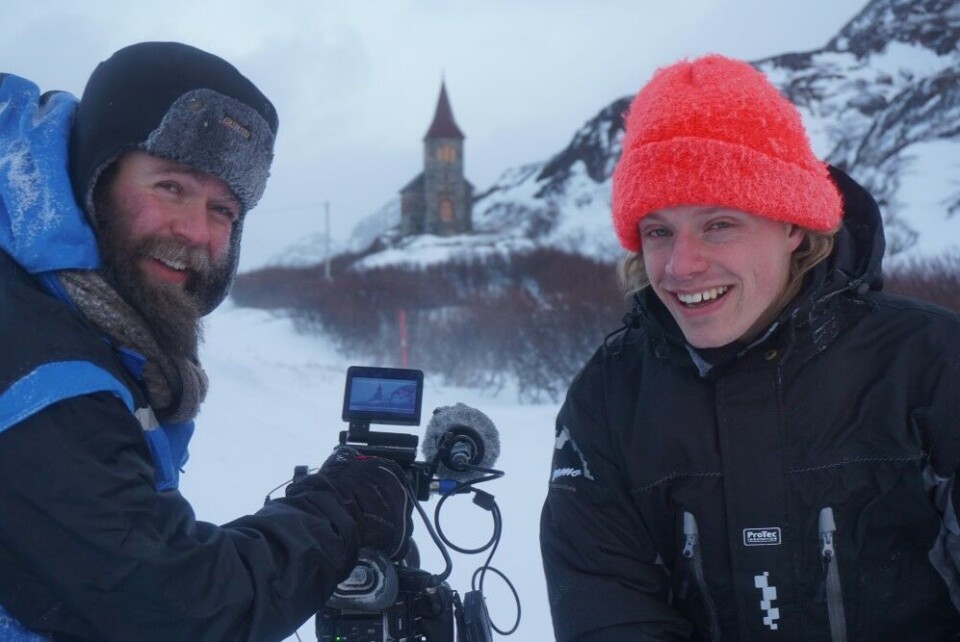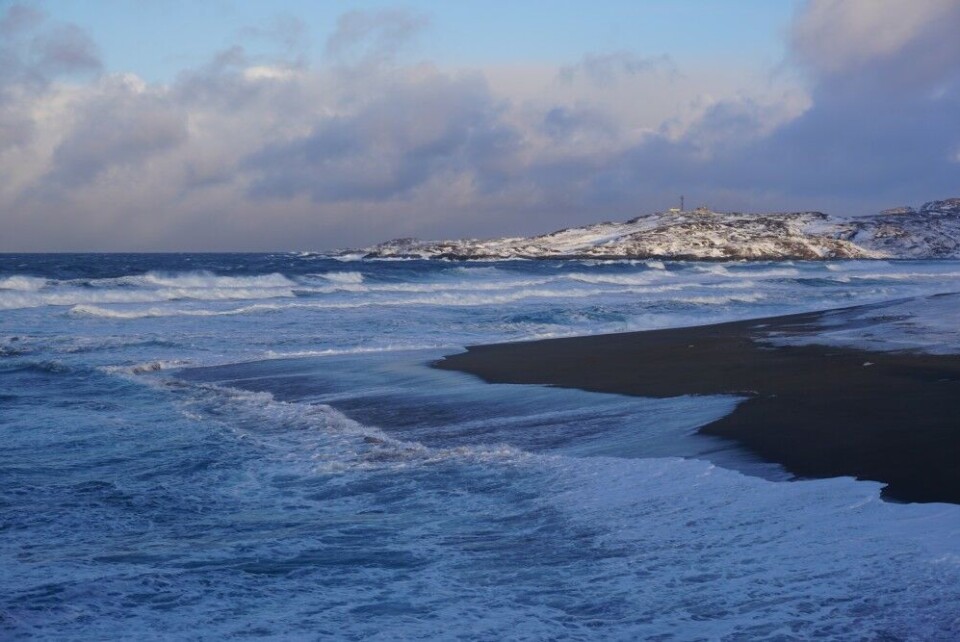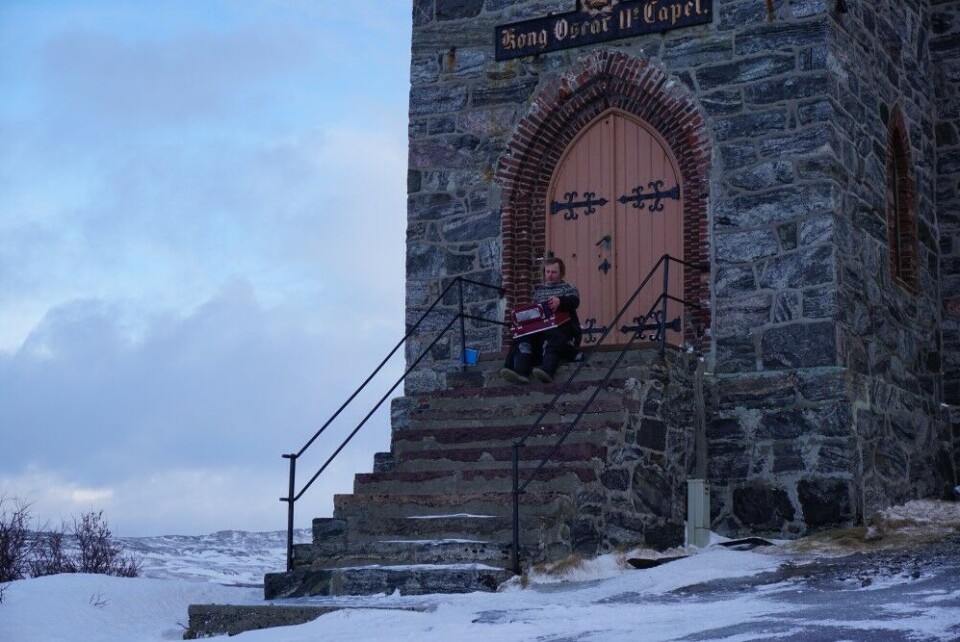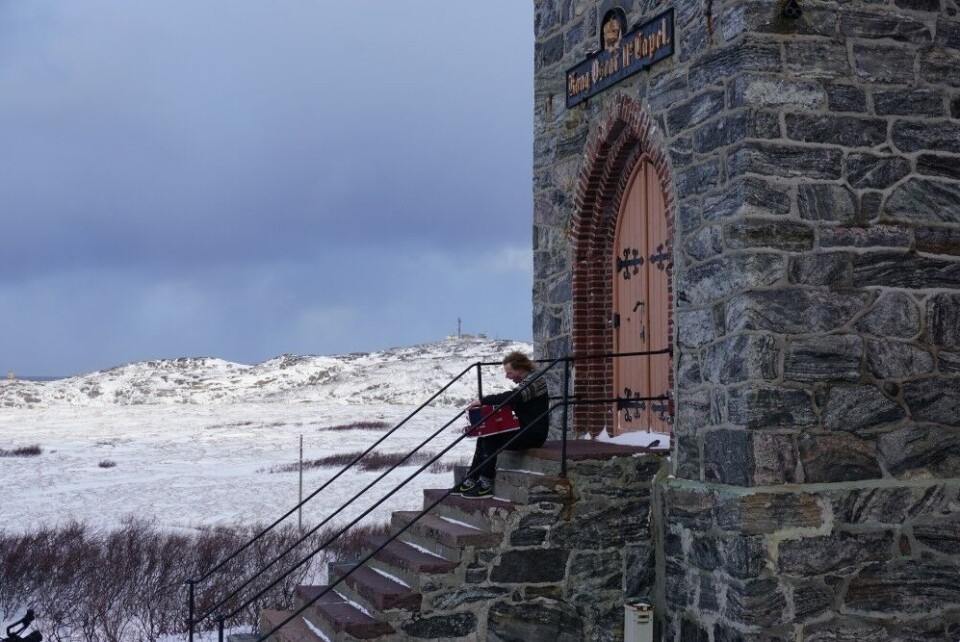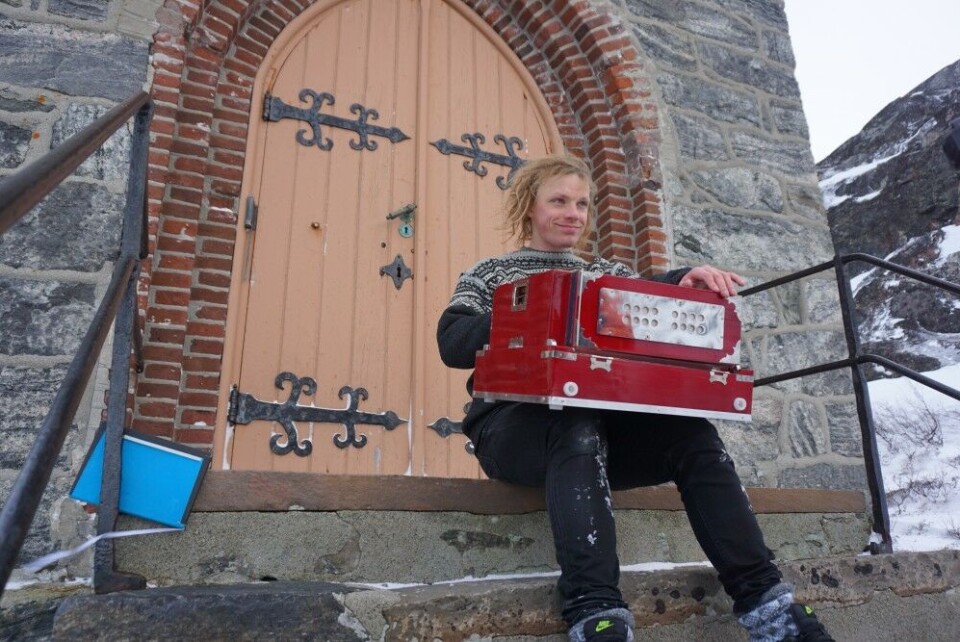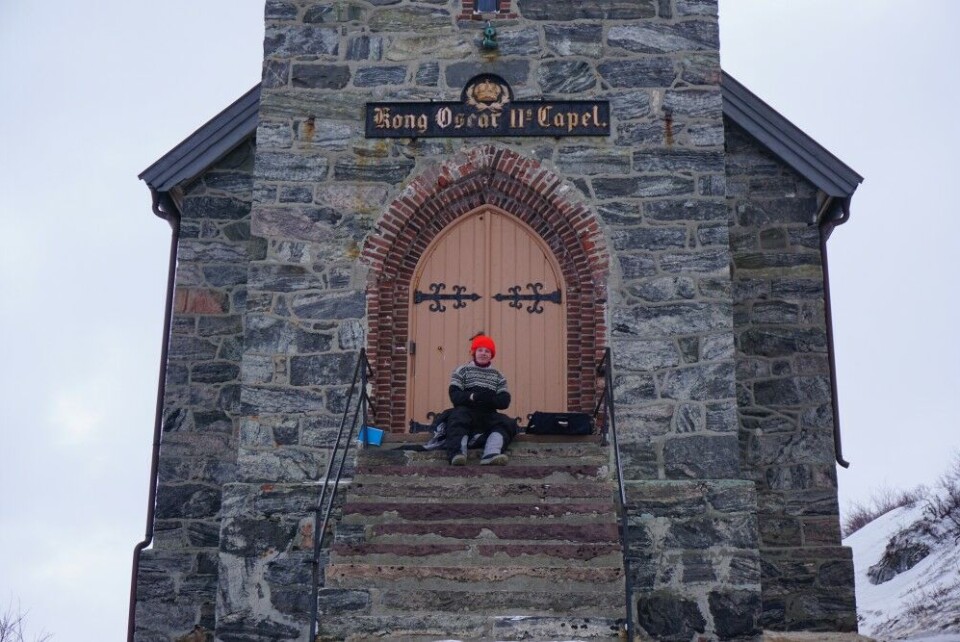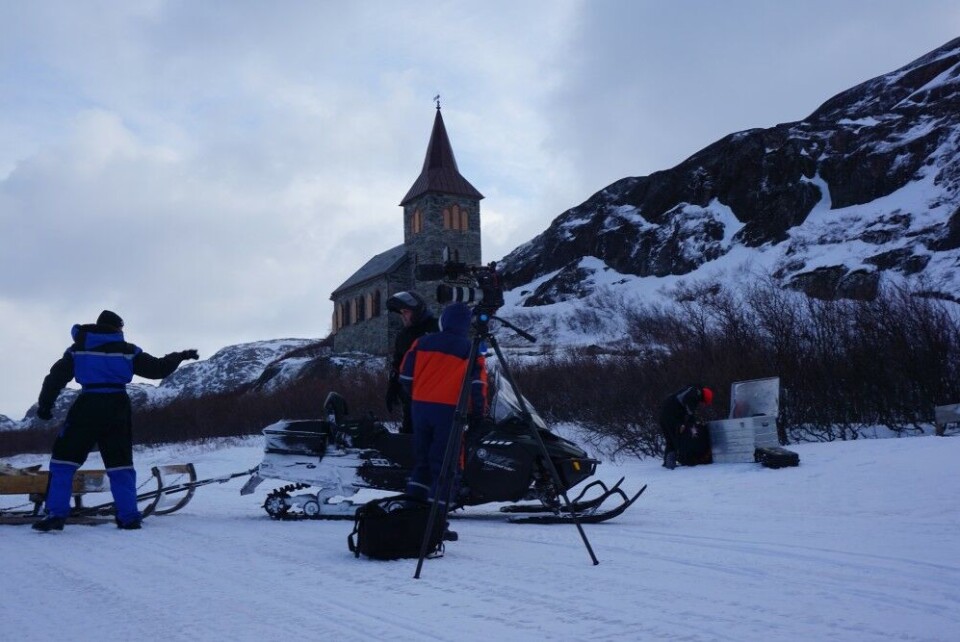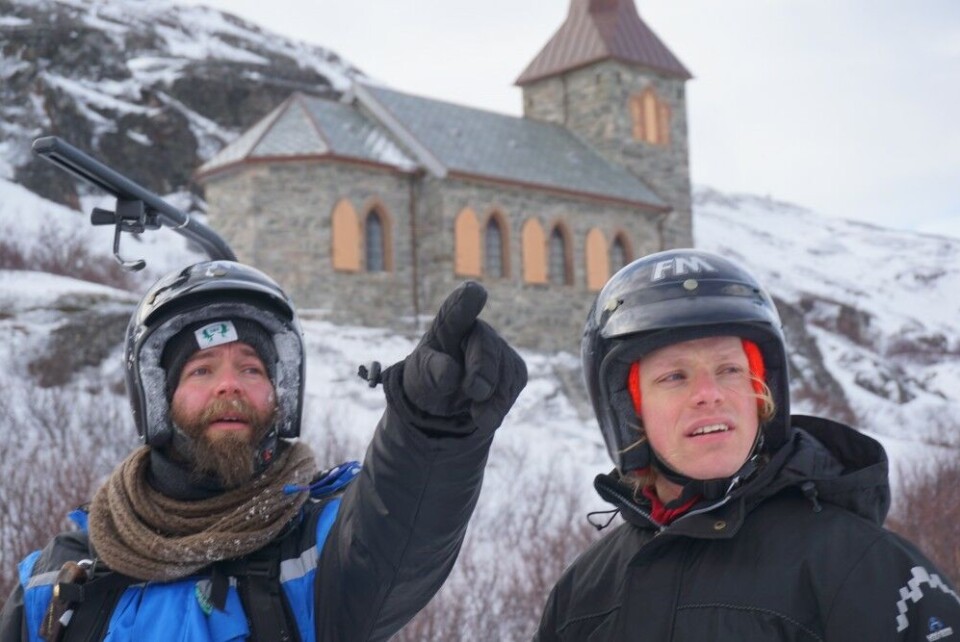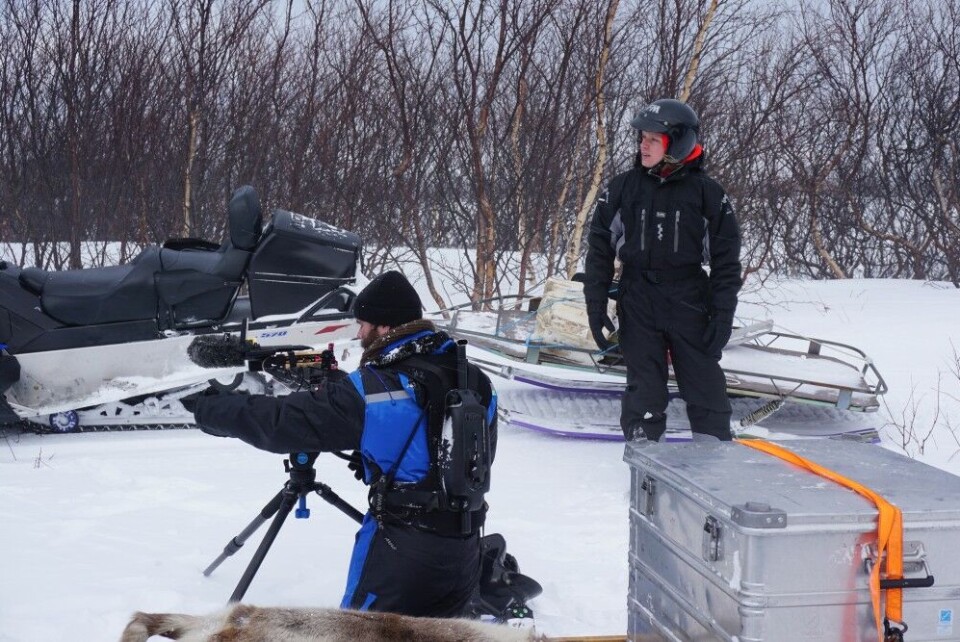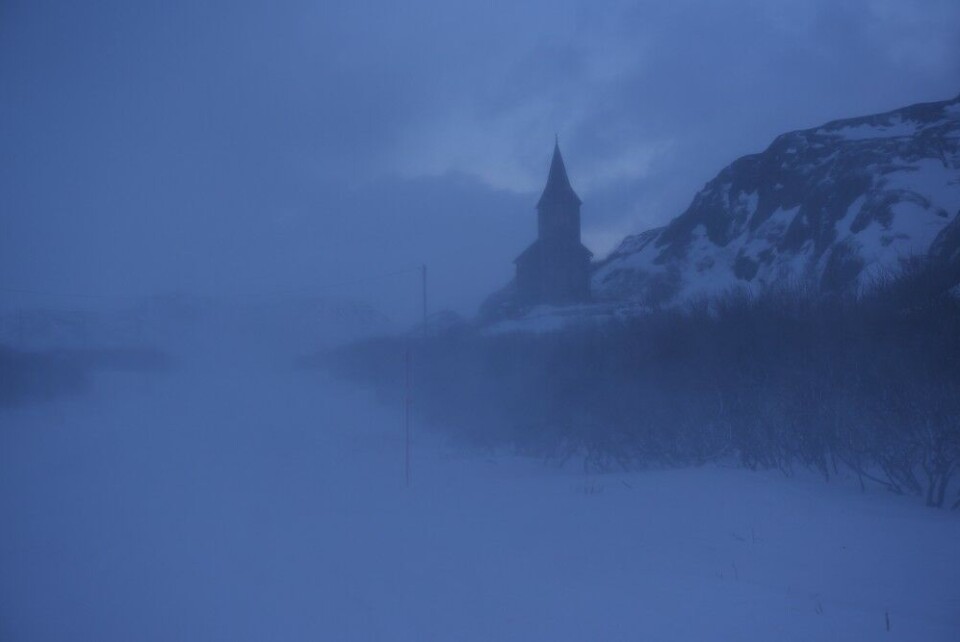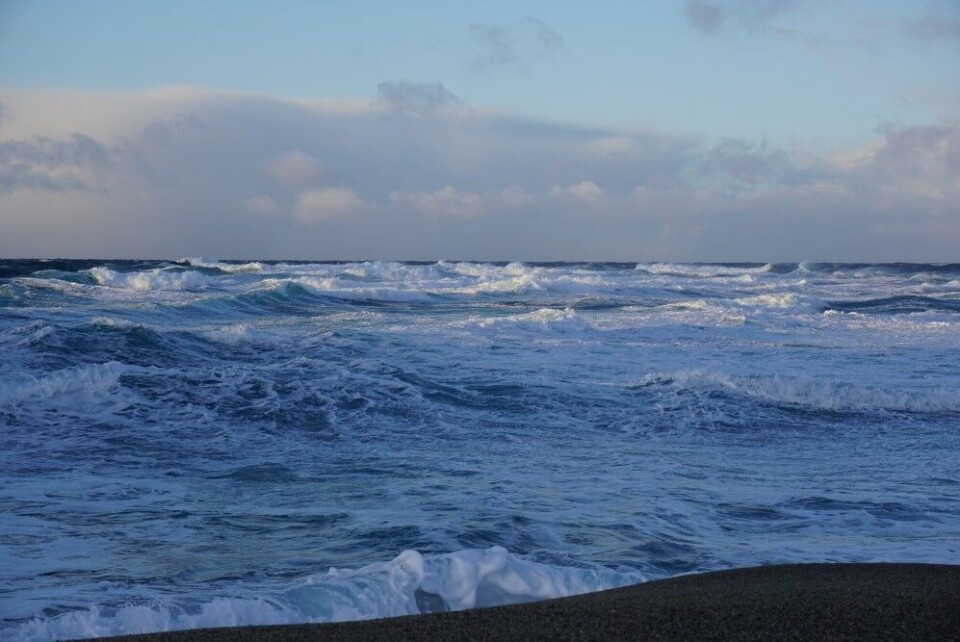Moddi plays Pussy Riot’s Punk Prayer on church steps close to Russian border
VIDEO STORY: “The message that Pussy Riot was trying to spread was a legitimate one,” says the Norwegian musician Pål Moddi Knutsen. Denied inside, his translation of the song was recorded on the church steps in Grense Jakobselv.
Punk Prayer is one of 12 forbidden songs that Pål Moddi Knutsen (29) includes in his new album Unsongs to be released this autumn. With the album, he interprets and translate songs from censored, imprisoned, exiled and murdered musicians from all over the world.
Performing Punk Prayer before the altar of Christ the Savior Cathedral in Moscow in 2012 got two of the Pussy Riot’s members sentenced to two years in penal colony for “hooliganism motivated by religious hatred.”
In Grense Jakobselv, where Norway in 1869 built the King Oscar II’ Chapel some 500 meters from the border with Russia, Pål Moddi Knutsen decided to record the music video of Punk Prayer.
“I asked the parish here in Sør-Varanger whether it would be possible to do this song in King Oscar II’s church and I was really 99 percent sure that this was absolutely no problem. But then they replayed that these lyrics and this song are not suitable for our halls. So, therefore we did it on the church steps,” explains Pål Moddi Knutsen.
“The message that Pussy Riot was trying to spread was a legitimate one,” he says arguing that the message in that song is important.
“I couldn’t let it be stopped, I mean, the parish don’t want us inside the church and that’s fine. I want this song to be heard, so doing it on the church steps was sort of meeting at the middle,” Moddi says to the Barents Observer.
Pussy Riot’s Punk Prayer is highly controversial in Russia, not only due to the political message in the song, but mainly because many consider the text and the performance to be an attack on the Russian Orthodox Church.
The lyrics choral refrain starts with (translated from Russian) “Birth-giver of God, drive away Putin.” Later, the text mentions both KGB’s saint descends and Gay Pride’s chained and detained.
It is not only Pål Moddi Knutsen that believes that the poetry in the song Punk Prayer has a deeper meaning than what many first think of when seeing the punk performance-style women with colorful balacava in front of the alter.
Analysing the text for The Guardian shortly after the Pussy Riot trail in 2012, Carol Rumen argues the song are not all raw obscenity; they have something significant to say, which many tend to obscure. Like in the first verse focusing on the vivid symbol of the unholy alliance of church and state.
The Guardian published the entire English translation of Punk Prayer.
You can see Pål Moddi Knutsen’s music video with his version of Punk Prayer recorded in Grense Jakobselv in this YouTube link.


